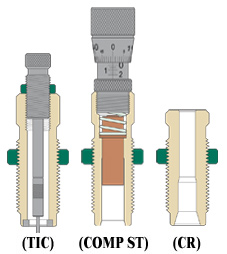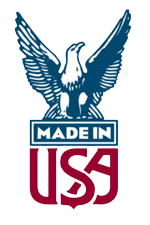Online Catalog
Traditional Competition Pro Series Die Sets Non Carbide
 Non Carbide For Traditional Cartridges
Non Carbide For Traditional CartridgesFeatures our Competition Bullet Seating Die
These “Competition Pro Series” three (3) die sets are also designed for use in progressive reloading machines by reloaders seeking the most advanced bullet alignment available. Since carbide dies are not available for certain cartridges, the sizing die is Redding’s unique 91000 series in heat-treated steel. (See F.A.Q. below.) To apply a tighter, more uniform roll type crimp, our popular Profile Crimp Die is used. No expander die is included, as most popular progressive machines expand the case mouth at the powder metering station.

Frequently Asked Question
Q: Why are carbide sizing dies not made for certain bottleneck and/or tapered cartridges?
A. While it is possible to produce carbide dies for tapered cartridges, the cost would be nearly prohibitive. Due to the tapered contact surfaces between the die and cartridge case, lubrication is still required. Thus, the advantage of carbide is lost. Any advantage in die life is negated by the increased cost.




